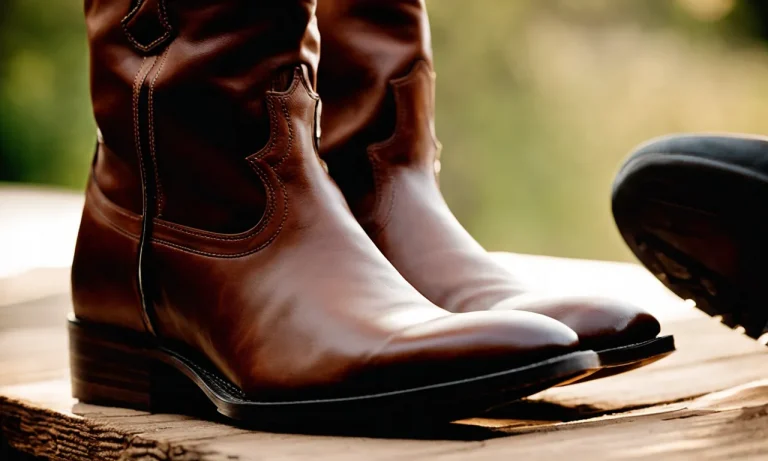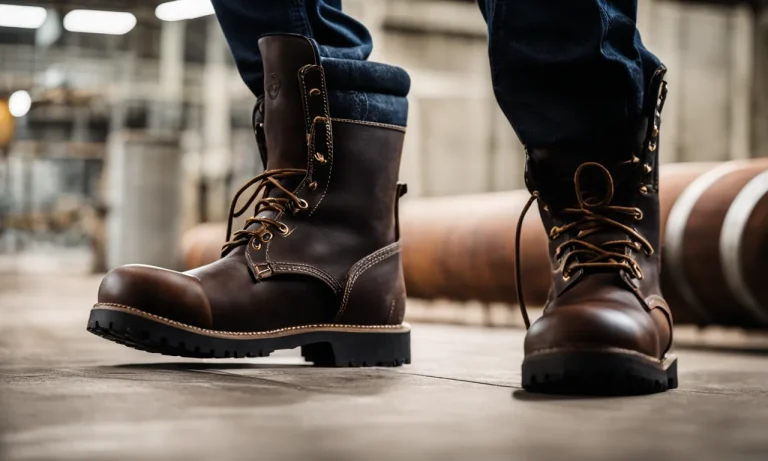If you’ve ever heard the phrase “something old, something new, something borrowed, something blue, and a sixpence in your shoe,” you may have wondered what exactly that last part means. Though not as commonly practiced today, the tradition of putting a sixpence coin in one’s shoe on their wedding day has a long history and symbolic meaning behind it.
In short, it was considered good luck for wealth and prosperity in marriage to have a sixpence in your shoe. The sixpence was a British coin used from the 16th to 20th century, worth about 6 pennies.
Read on below for a deep dive into the origins and evolution of this tradition over the centuries, and why some brides still like to keep it today.
The History Behind the Sixpence Wedding Tradition
Weddings are filled with traditions and rituals that have been passed down through generations. One such tradition is the placement of a sixpence in the bride’s shoe. This small coin holds a significant meaning and has a rich history behind it.
The Sixpence Coin and its Significance
The sixpence coin, which was minted in Britain from the 16th to the 20th century, holds a special place in the hearts of many couples. It is believed to bring good luck, prosperity, and financial security to the newlyweds.
By placing it in the bride’s shoe, it is thought to ensure a prosperous future for the couple.
Historically, the sixpence was considered a symbol of wealth and was often given as a gift to mark special occasions. It was believed that carrying a sixpence would bring good fortune and protect against financial hardships.
Thus, incorporating it into the wedding tradition became a way to wish the couple a prosperous life together.
Possible Celtic and Roman Roots
While the exact origin of the sixpence in the shoe tradition is unknown, there are theories that suggest Celtic and Roman influences. In Celtic culture, it was customary to give a bride a silver coin as a symbol of prosperity and luck.
Similarly, in ancient Rome, brides would wear a special shoe called a “Soccus” that had a small compartment to hold a coin.
It is believed that these customs eventually merged, leading to the incorporation of the sixpence into the wedding tradition we know today. Over time, the sixpence became the coin of choice due to its availability and association with British culture.
Specific Examples and References Throughout British History
The sixpence in the shoe tradition is deeply rooted in British history and has been mentioned in various literary works and historical references. For example, in William Shakespeare’s play “Hamlet,” the character Ophelia mentions the sixpence in her famous line, “There’s rosemary, that’s for remembrance; and there is pansies, that’s for thoughts…There’s a daisy.
I would give you some violets, but they withered all when my father died. They say he made a good end…For bonny sweet Robin is all my joy…And will he not come again? And will he not come again? No, no, he is dead. Go to thy deathbed. He never will come again.
His beard was as white as snow, All flaxen was his poll. He is gone, he is gone, And we cast away moan, God a’ mercy on his soul. And of all Christian souls, I pray God. God be wi’ ye.” This reference showcases the prominence of the sixpence in British culture during that era.
Furthermore, there are numerous accounts of brides wearing a sixpence in their shoe in historic wedding photographs and personal anecdotes. These instances serve as a testament to the enduring nature of this tradition and its significance in British weddings.
What Putting a Sixpence in Your Shoe Represents
For centuries, the tradition of placing a sixpence in your shoe has been associated with various meanings and beliefs. This small act holds significance in different cultures and has become a popular custom during weddings and other important occasions.
Let’s explore the different representations behind this age-old tradition.
Wish for Prosperity
One of the most common interpretations of putting a sixpence in your shoe is as a wish for prosperity. The sixpence, a British coin that was in circulation until 1980, is often seen as a symbol of good luck and financial abundance.
By placing it in your shoe, you are believed to attract wealth and success in your endeavors. It’s a way of manifesting positive energy and setting the intention for a prosperous future.
Ward Off Evil Spirits
Another belief associated with placing a sixpence in your shoe is the ability to ward off evil spirits. Some cultures believe that evil spirits are attracted to celebrations and joyous occasions, and by having a sixpence in your shoe, you create a barrier of protection.
It’s believed that the coin acts as a talisman, keeping negative energies at bay and ensuring a joyful and harmonious event.
Reference to Dowry Practices
The tradition of putting a sixpence in your shoe can also be traced back to dowry practices in certain cultures. In the past, a dowry was a sum of money or valuable goods that a woman brought to her marriage.
The sixpence symbolized the bride’s portion of the family’s wealth and was often placed in her shoe as a token of her financial contribution to the union. Today, placing a sixpence in your shoe serves as a nod to this historical practice and symbolizes the bride’s independence and financial stability.
How the Tradition Has Changed Over Time
The tradition of placing a sixpence in the bride’s shoe on her wedding day has gone through various changes over time. While it may not be as common today as it once was, it is still practiced in some cultures and has even been adapted to fit the customs of different regions.
Less Common Today But Still Practiced
While the tradition of placing a sixpence in the shoe may not be as widespread as it once was, it is still practiced by some couples who want to add a touch of old-fashioned charm to their wedding day.
Many brides choose to incorporate this tradition as a nod to the past and as a way to honor their heritage.
Although the exact origins of this tradition are unclear, it is believed to have originated in the United Kingdom, where the sixpence was a form of currency. The sixpence coin was often given to the bride by her father to bring good luck and prosperity to the newlyweds.
Today, couples who choose to include a sixpence in their wedding often do so for sentimental reasons or as a way to honor their family’s traditions. It adds a unique and personal touch to the wedding ceremony, and many brides cherish the sixpence as a keepsake from their special day.
Adapted for Other Cultures
While the tradition of placing a sixpence in the bride’s shoe originated in the United Kingdom, it has been adapted by other cultures as well. In some Eastern European countries, a similar tradition involves the bride wearing a coin in her shoe to bring good luck and financial prosperity to the marriage.
In India, there is a tradition of the groom presenting the bride with a small bag of coins known as a “shagun” during the wedding ceremony. These coins are said to symbolize wealth and prosperity for the couple.
These adaptations of the tradition show how it has been embraced and incorporated into different cultural practices, highlighting its enduring significance and appeal.
New Twists Using Local Coins
In recent years, couples have started to put their own unique twists on the tradition by using coins that hold personal significance to them. Instead of using a traditional sixpence, some couples choose to use a coin from their own country or a coin that has sentimental value.
This personalized approach adds an extra layer of meaning to the tradition and allows couples to showcase their individuality. It also serves as a way to incorporate their own heritage and history into their wedding day.
With the rise of social media and the sharing of wedding photos, these new twists on the tradition have gained popularity and have inspired other couples to put their own spin on the practice.
Conclusion
Though not as ubiquitous as it once was, the tradition of putting a sixpence in one’s shoe on their wedding day still holds meaning and fascination today. With its roots stretching back centuries and its symbolic wishes for the couple’s prosperous future, it’s a unique folk custom that persists even as wedding traditions continue to evolve.
Whether practiced in its traditional British form or adapted to local culture, tucking a special coin into shoes remains a distinctive good luck charm for brides around the world. So next time you hear the old wedding rhyme, you’ll know the story behind that shiny sixpence in the shoe!






